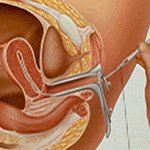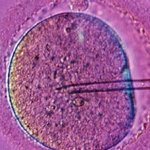Articles tagged with: Infertility
Artificial insemination, IUI procedure »
IUI is usually suggested for those couples who have been trying to conceive for a year or more without success and have been found to have infertility issues. It is always recommended to perform a complete infertility examination before undergoing this process.
In general, artificial insemination is used when:
A woman’s cervical mucus is scant or hostile to sperm. Through IUI, sperm directly reaches the uterus, bypassing the cervix and the cervical mucus.
The man has a low sperm count, though the sperm should be healthy.
Male infertility due to antibodies to his own …
Artificial insemination, IUI procedure »
The most ideal time to perform a IUI is within six hours of ovulation, either before or after. When there are male infertility issues many doctors advise that the IUI is done after ovulation. If there are female infertility issues, it’s usually advised that you do the IUI before the ovulation as chances are higher when the sperm is there just waiting for the egg.
When timing of the IUI is based on and HCG injection, the IUI is usually done between 24 and 48 hours later. Average timing is to …
Artificial insemination, IUI procedure »
There are many factors that determine how successful an IUI procedure will be. Some of these are the same factors that apply to any fertility treatment: age of the female, ovarian function, fallopian tube blockage, pelvic adhesions and other additional causes of infertility, whether fertility medications were also used etc.
One important factor that is specific to intrauterine insemination is the amount of motile sperm that is inserted into the uterus. Several studies have indicated that if a man has a low number of progressively motile sperm after the sperm …
Artificial insemination, ICSI procedure »
ICSI stands for Intro Cytoplasmic Sperm Injection. The whole technique was developed by researches of Brussels University and a science institution in St. Louis, US. The amazing thing about ICSI procedure is that men who were considered ultimately unable to fertilize have succeeded in it and the procedure implication worldwide has already resulted in more than 10,000 babies and perfectly physically, genetically and mentally babies they are. You or your spouse might be the one for ICSI procedure if you are closely familiar with one of the following cases.
The …
Artificial insemination, GIFT procedure »
Male. Male patients with a low sperm count have poor chances to impregnate their partners by natural means. While insemination can improve these chances, if changes in the quality of sperm are severe, the G.I.F.T. procedure may be the best answer to the problem. As research in this area improves, success in the treatment of male infertility will be significantly improved. Right now, the success rate of G.I.F.T. procedures is significantly higher than that of conception of other means (IVF/ET or vaginal/cervical/intrauterine insemination).
Female. Women play a major role during conception. …
Artificial insemination, GIFT procedure »
The success rate after GIFT is similar to that of in-vitro fertilization (IVF) treatment. Some specialists claim a higher success rate with GIFT compared to IVF.
Procedure Live birth rate per embryo transfer cycle
IVF 31.0%
ICSI 28.6%
GIFT 24.5%
ZIFT 29.2%
Choosing between GIFT and IVF treatment? There are several points worth considering when selecting between gamete intra-Fallopian transfer (GIFT) and in-vitro fertilization (IVF). The GIFT procedure is simpler and usually less stressful to the couple than IVF. However GIFT requires healthy Fallopian tubes, while IVF can be performed …
Artificial insemination, GIFT procedure »
Gamete Intra-Fallopian Transfer (GIFT) is a procedure in which the eggs are mixed with sperm and the mixture is then injected into the Fallopian tube. It is suitable for women who have at least one healthy Fallopian tube. The aim of GIFT is to allow fertilization to occur in the right place and implantation at the right time.
There are selected groups of patients to whom gamete intra-Fallopian transfer (GIFT) is recommended.• Couples with unexplained infertility.
• Women with minimal endometriosis.
• Men with infertility problem (not severe).
• Couples who have had failed …
Artificial insemination, IUI procedure »

Intra-Uterine Insemination (also known as artificial insemination) is the process of preparing and delivering sperm so that a highly concentrated amount of active motile sperm is placed directly through the cervix into the uterus. The current IUI pregnancy rate per treatment at UCSF is 14-15%. IUI can be performed with or without fertility drugs for the female patient. Compared to timed intercourse, it is generally accepted that there is a 2-fold higher pregnancy rate with IUI. Thus, for infertility patients, IUI is commonly performed as a low-tech, cost-effective approach to …
Artificial insemination, IVF procedure »

IVF (In Vitro Fertilisation) is an Assisted Reproductive Technology used to help couples conceive. If you have undergone hormonal therapies and artificial insemination without any success in conceiving, then IVF might be for you. To date, IVF is the most popular of all assisted reproductive technologies available.
IVF is the process of creating a fertilised female egg in a laboratory. It involves extracting an egg from the female and sperm from the male, and then placing them together in a lab dish to enhance the chances of fertilisation. If the egg …
